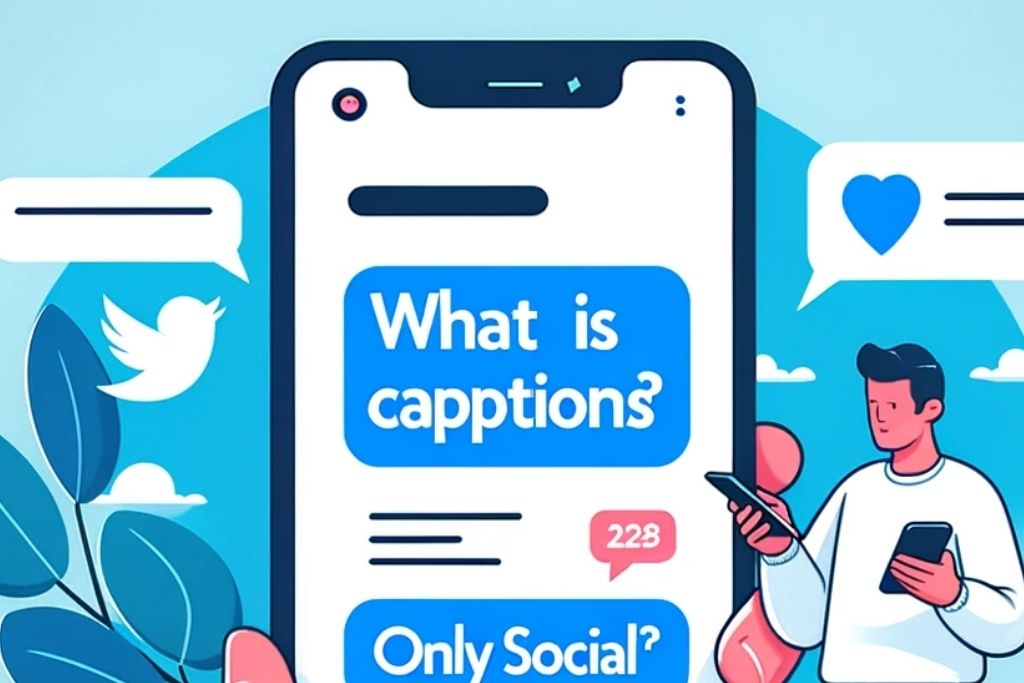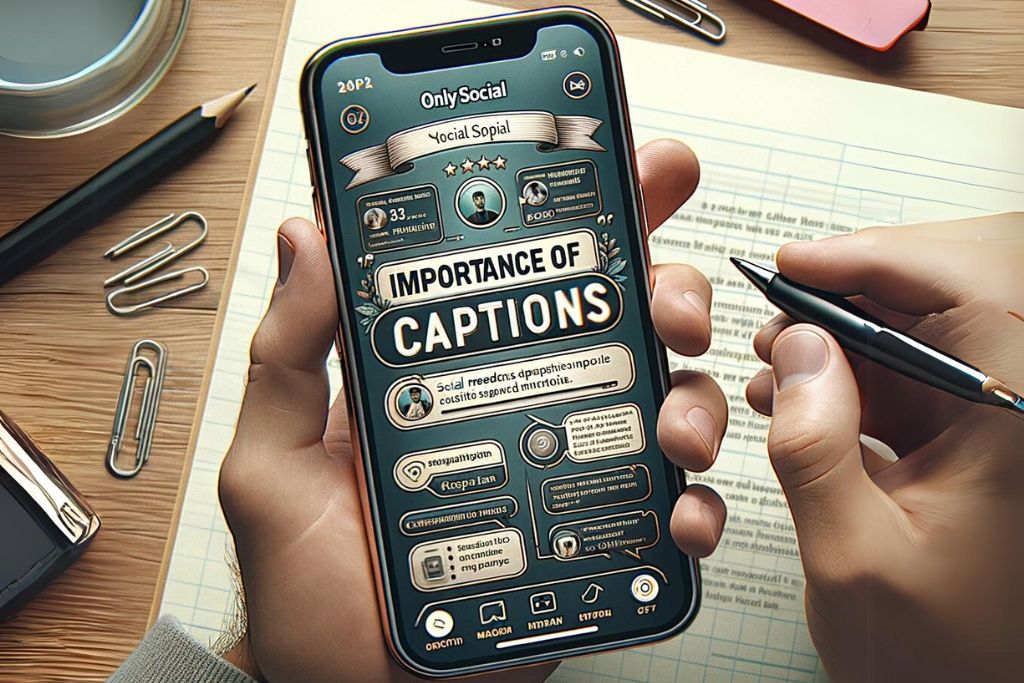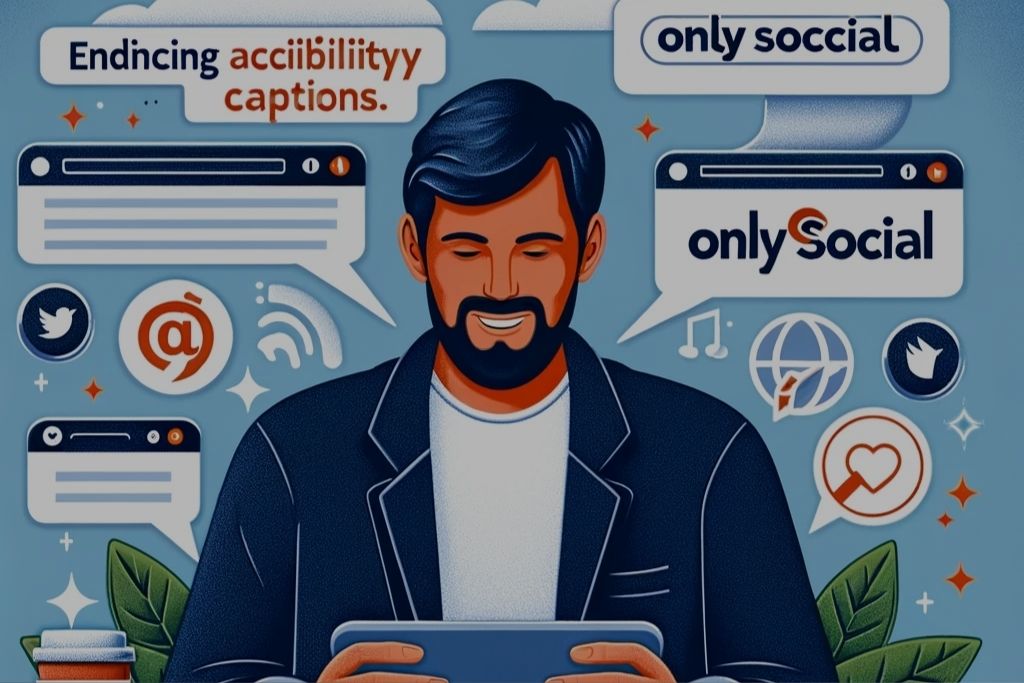Welcome to the world where accessibility is paramount and every viewer matters. One of the common barriers to full accessibility is the ability to understand video content. But fret not, because the strategy of enhancing accessibility with captions is rapidly changing this landscape.
So, what’s the connection between captions and accessibility? Imagine being able to reach out to people who might face difficulty in understanding the spoken word in your video. It could be those who have hearing impairments, are non-native speakers, or even those stuck in a noisy surrounding. Your content now becomes inclusive and accessible to this wider audience once you introduce captions. Moreover, it’s not just about inclusivity but also about improving viewership and expanding your reach.
We are embarking on a journey to understand how to effectively use captions for accessibility enhancement. Buckle up and join us in this valuable exploration.
Table of Contents
- 1 What Are Captions?
- 2 The Power of Captions
- 3 Importance of Captions in Different Fields
- 4 Making the Most Out of Captions
- 5 Frequently Asked Questions
- 5.0.0.0.1 What are captions?
- 5.0.0.0.2 What is the difference between open captions and closed captions?
- 5.0.0.0.3 How do captions enhance accessibility?
- 5.0.0.0.4 How can I make the most out of captions?
- 5.0.0.0.5 Are captions only for people with hearing impairments?
- 5.0.0.0.6 Can captions improve SEO for videos?
- 5.0.0.0.7 How do I add captions to my videos?
- 6 Conclusion
What Are Captions?

Captions, a seemingly simple concept, hold the potent ability to enhance accessibility in digital content. But what exactly are captions? Broadly speaking, captions are textual versions of the spoken dialogue and context-relevant audio cues in videos, such as music or sound effects.
They are a powerful tool to enhance accessibility, allowing viewers with hearing impairments or those without access to audio to fully understand the content.
Now let’s look at the two main types of captions:
1. Open Captions
These are a permanent feature of the video and cannot be turned off. They’re part of the video frame itself. Because they’re always present, they’re user-friendly and highly effective in enhancing accessibility.
2. Closed Captions
These are optional and can be turned off by the viewer. They’re most commonly used in digital platforms where viewers can choose whether or not they need the text overlay.
| Caption Type | Description | Role in Enhancing Accessibility |
|---|---|---|
| Open Captions | Permanent part of the video | Always present, user-friendly and accessible |
| Closed Captions | Optional and can be turned off | Customize according to viewer needs |
The key goal of these captions, regardless of the type, is to enhance comprehension and inclusivity, essentially enhancing accessibility with captions. Whether your audience prefers one over the other will highly depend on their individual needs and preferences.
The Power of Captions

Captions invoke a transformative power when it comes to breaking accessibility barriers, but how exactly do they work towards enhancing accessibility with captions? Let’s dive into the power of captions and their myriad benefits.
1. Expanding Accessibility
One of the most significant advantages of captions is the ability to make content accessible to people with hearing impairments. By providing a textual representation of the spoken dialogue and relevant audio cues, captions ensure that everyone can enjoy and comprehend video content regardless of their hearing abilities.
2. Boosting Comprehension
Captions don’t only cater to those with hearing impairments but also benefit viewers who struggle to understand accents, dialects, and fast-paced speech. By visually representing the dialogue, captions allow these viewers to better follow along and comprehend the content.
3. Bridging Language Barriers
For non-native speakers, understanding content in a foreign language can be challenging. Captions can be a savior in such cases, taking the shape of translated subtitles that allow for better understanding and ease of access to content across language barriers.
4. Enhancing Viewing Experience in Noise-Sensitive Environments
In places where the audio must be muted, captions come to the rescue. Whether it’s in a library, a workplace, or a public space, viewers can continue watching videos with the help of captions, ensuring that no information is missed.
Captions play an integral role in making content more accessible, comprehensible, and inclusive. From aiding those with hearing impairments to dismantling language barriers, the power of captions is undeniably transformative in the realm of accessibility.
Importance of Captions in Different Fields

Enhancing accessibility with captions is essential in various fields, fostering inclusivity and improving the user experience across various platforms. Let’s delve into the significance of captions in some key sectors.
1. Education
In the educational sector, captions are crucial for accommodating students with hearing impairments or learning disabilities. They foster an inclusive learning environment by ensuring that everyone, regardless of their abilities, has access to the educational content. Additionally, captions support comprehension for non-native speakers and students with diverse learning needs, catering to a larger student body.
2. Media and Entertainment
In the world of television, movies, and streaming platforms, captions play a vital role in reaching out to viewers with hearing impairments. Captions also enable content creators to cater to a global audience by providing translated versions of their content, removing language barriers that would otherwise restrict viewership.
3. Corporate and Business
In a workplace setting, captions ensure accessibility and comprehension during presentations, training sessions, and video conferences. This benefits employees with hearing impairments and helps avoid miscommunication, fostering an inclusive work environment.
4. Healthcare
Captions play a significant role in making medical procedures, training videos, and patient educational materials accessible to everyone involved. They allow users to understand complex information more readily and guarantee that no vital information is missed or misinterpreted.
5. Social Media
With the increasing popularity of video content on social media, captions help content creators increase their reach and engagement. Captions ensure that even viewers who can’t or don’t want to have sound on can still consume the content, amplifying the potential audience.
These examples showcase the paramount importance of captions in various fields. Enhancing accessibility with captions opens up opportunities for people with diverse needs, breaks down language barriers, and fosters a more inclusive and comprehensive understanding of information across several sectors.
Making the Most Out of Captions
Integrating captions into your video content is just the first step. To truly enhance accessibility with captions, it’s essential to know how to make the most of them. Here are some actionable tips:
1. Accurate and Timely Captions
The accuracy of your captions is crucial for viewer comprehension. Ensure that your captions are directly aligned with the spoken content and are synchronized with the audio to prevent confusion or disorientation for the viewers.
2. Caption Formatting for Clarity
Clear and legible formatting is key to making captions truly accessible. Choose a suitable font, size, and color contrast that viewers can comfortably read and comprehend. Consider the placement of your captions on the screen in a way that doesn’t obstruct any vital visual elements.
3. Captions for Sound Effects and Background Noises
While most captions focus on spoken words, don’t overlook the significance of sound effects and background noises. Descriptive captions for such sounds provide additional context to the viewers and further enhance accessibility.
4. Consistency in Style Guide and Language
To ensure a seamless viewing experience, maintain a consistent style and language across all your captions. Consistency in abbreviation usage, punctuation, and capitalization is vital for viewer comprehension.
5. Remember Your International Viewers
For content that caters to an international audience, providing captions in more than one language can exponentially enhance accessibility. Give your non-English speaking audience the option to choose captions in their preferred language.
By paying attention to these details and making the most out of your captions, you can truly transform your content’s accessibility, reaching a broader audience and ensuring your message is both heard and understood.
BONUS
Enhance your social media reach effortlessly with OnlySocial’s Post Planning and Scheduling function. Seamlessly plan and schedule captivating posts across all social networks. Our tool offers unlimited posting and lets you manage unlimited social profiles. Don’t miss out on maximizing your visibility. Unlock the potential of SEO for Instagram content and more. Try it now with our commitment-free 7-day today.
Frequently Asked Questions
What are captions?
Captions are textual representations of the spoken dialogue and relevant audio cues like music or sound effects in videos. They enhance accessibility by allowing viewers with hearing impairments or those without access to audio to fully understand the content.
What is the difference between open captions and closed captions?
Open captions are a permanent part of the video, which cannot be turned off, whereas closed captions are optional and can be turned on or off by the viewer.
How do captions enhance accessibility?
Captions enhance accessibility by providing a way for people with hearing impairments to understand the content, improving comprehension for people who struggle with accents or fast-paced speech, bridging language barriers for non-native speakers, and enhancing the viewing experience in noise-sensitive environments.
How can I make the most out of captions?
To effectively use captions, ensure they are accurate, timely, clearly formatted, and consistent in style. Include descriptive captions for sound effects and background noises, and consider offering captions in multiple languages for international audiences.
Are captions only for people with hearing impairments?
While captions are beneficial for people with hearing impairments, they also enhance accessibility for those with learning disabilities, non-native speakers, or anyone in noise-sensitive environments. Captions improve comprehension and content consumption for a wider audience.
Can captions improve SEO for videos?
Yes, captions can improve SEO (Search Engine Optimization) for videos as they provide text content that can be indexed by search engines, making your video more discoverable and potentially leading to increased viewership.
How do I add captions to my videos?
You can add captions to your videos using video editing software, captioning tools, or by hiring a professional captioning service. Many online video platforms, such as YouTube and Vimeo, also offer built-in captioning features and automatic caption generation.
Conclusion
In conclusion, captions serve as a powerful tool for enhancing accessibility, expanding the reach of video content to diverse audiences, and fostering inclusion. By paying attention to the accuracy, formatting, consistency, and language options of captions, content creators can ensure that their videos cater to a broader range of viewers, making content more accessible to people with varied needs and backgrounds. With an increasing focus on digital content consumption, the importance of captions cannot be underestimated, and their integration will continue to become more essential, shaping the future of content accessibility.




